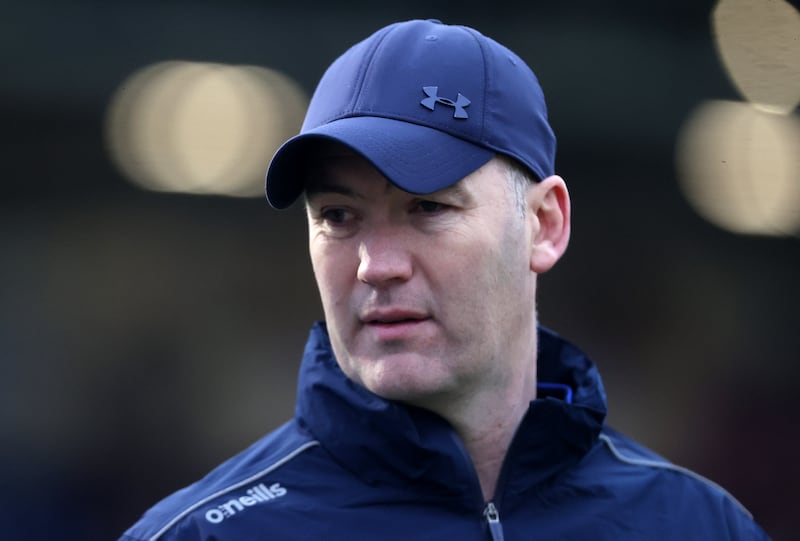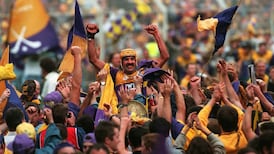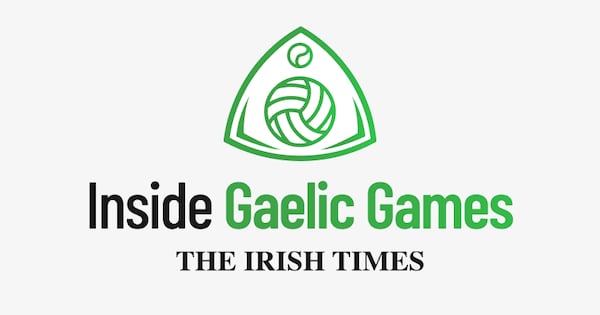If in doubt, there’s always a column in the complaints section.
‘If you don’t have something nice to say, say nothing at all’ is not an option available to the put-upon columnist.
In fact, it turns out we usually have most to say when we’re giving out about something.
And it’s springtime all the year round when it comes to complaining in the GAA. From the mountaintop they come down, babbling brooks-full, great waterfalls of the stuff. And yet here we are, two weeks into both the hurling and football leagues, and . . . nothing. I’ve got nothing.
READ MORE
I thought I had a backstop, just in case Jim Gavin really did save football in 14 days (and what were the chances of that, right?)
There was always the hurling league. The good old, reliable, terrible hurling league. It has been the biggest waste of time in the GAA calendar for the guts of a decade. If the FRC really had solved all of football’s ills, I could always roll out the hurling league piñata and give that a whack or two.
And then, almost as an afterthought, as an aside, the GAA go and pretty much solve that as well.
The return of jeopardy to the hurling league has breathed new life into the competition. Relegation from 1A to 1B hits county boards financially, and relegation from 1B to Division 2 is a trapdoor that none of the counties currently trying to establish themselves in, or return to, the Leinster championship can possibly imagine falling through.
The difference for the bigger counties between welcoming Kilkenny and Limerick for home games, and having two Joe McDonagh Cup teams coming to town is not just a lack of competitive games. Counties get to keep the gate receipts for home league games, and, in places like Cork and Galway in particular, that’s money that is badly needed.
So Galway’s reaction to their abject performance against Tipperary first time out in Nowlan Park last Sunday was not just about a measure of self-respect – Galway really don’t want to go down to 1B. And for the teams that are down there already, like Waterford, they’re not exactly finding it a walk in the park, as evidenced by Carlow’s win last weekend.

Carlow, Westmeath, Laois, Offaly – they’ve all fought like hell to get regular chances to play the big teams. And whatever about the pre-tournament predictions of Dublin, Antrim and Waterford fighting it out for promotion, those four counties have no intention of going back down to Division 2.
There would be little argument among most right-minded hurling supporters that the best seven teams in the country are in Division 1A, and the next seven are in Division 1B (the 1A/1B designation is silly, but no sillier than League 1 being the third tier of English football).
The carrot of promotion currently offered to the next seven best teams, in Division 2, is a chance to play at least two teams that are in their sights as potential targets if they really got their hurling house in order; and two, maybe three games, against Liam MacCarthy opposition.
The seven counties in that group – Down, Kildare, Donegal, Meath, Derry, Tyrone, and Kerry – have a total population of almost 1.8 million people. Down, Kerry and Meath played in the Joe McDonagh Cup in 2024. Kildare will replace Meath in that competition in 2025.
Liam MacCarthy success might look impossible any time soon for those counties but they can at least aim for Carlow and Westmeath, and wonder if overtaking them really is an impossibility. It would appear so, if the history books are anything to go by.
But I can imagine the jockeying for position has more of an edge now than in the past. The 2025 league gives us a pretty clear picture of the top 21 counties in the game right now.
If Willie Maher is looking at the key areas he needs to support to grow hurling in his new job as national head of hurling, then those counties have to make sure to be right in his eye line.
Why do I mention their combined population being larger than Dublin?
At the turn of the millennium, the funding Dublin got was to try to protect the country’s major urban area from turning into a wasteland for the GAA. It was spectacularly successful – in intercounty terms with regard to football, and in participation terms in regard to hurling.
The Dublin senior hurling team did not get the bounce that the footballers received from that money, but they were starting from a much lower base. And there are other measures of success.
Playing hurling, even if it’s just for five or six years, is now an accepted part of Dublin kids’ sporting lives. Dublin is the only county in Ireland in the last 10 years to have produced two separate All-Ireland senior club-winning sides.
But we’ve known these areas of potential growth for years. What’s different now?
Willie Maher doesn’t have the unqualified support that Jim Gavin had from the rank-and-file to go and chase a revolution, but if he focused on those seven counties in Division 2 (and the 25 per cent of the island’s population that live in them), then he’d have his own revolution.
Instead of complaining, maybe the GAA have developed a taste for solving problems. Bad news for columnists, good news for everyone else.

















